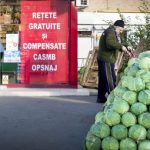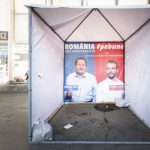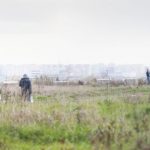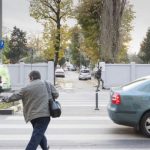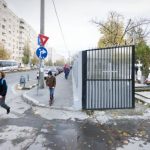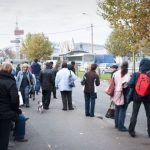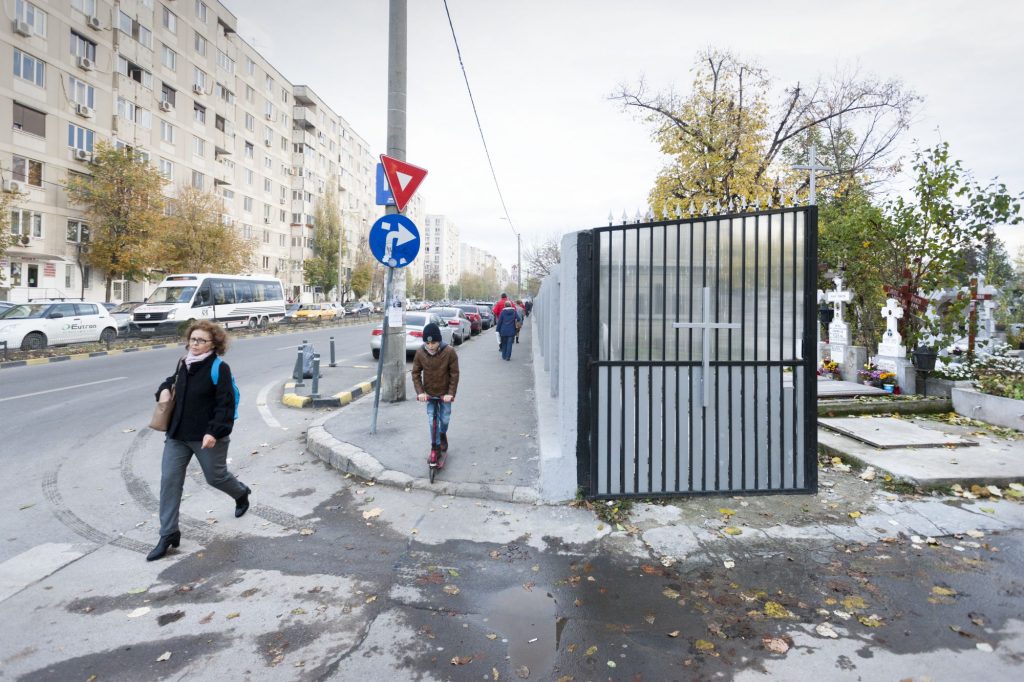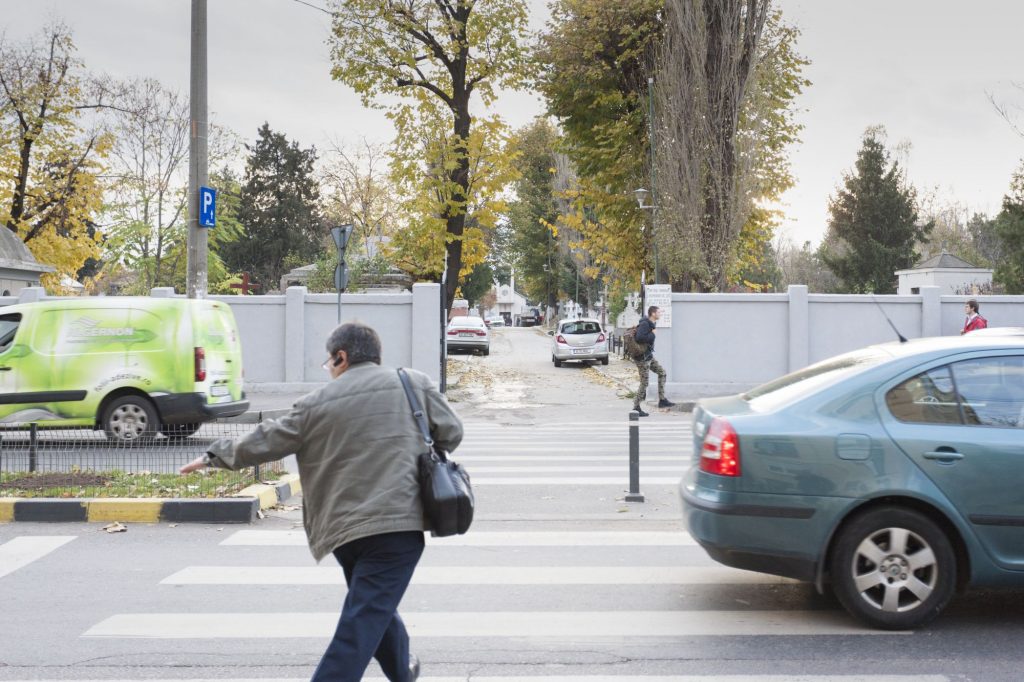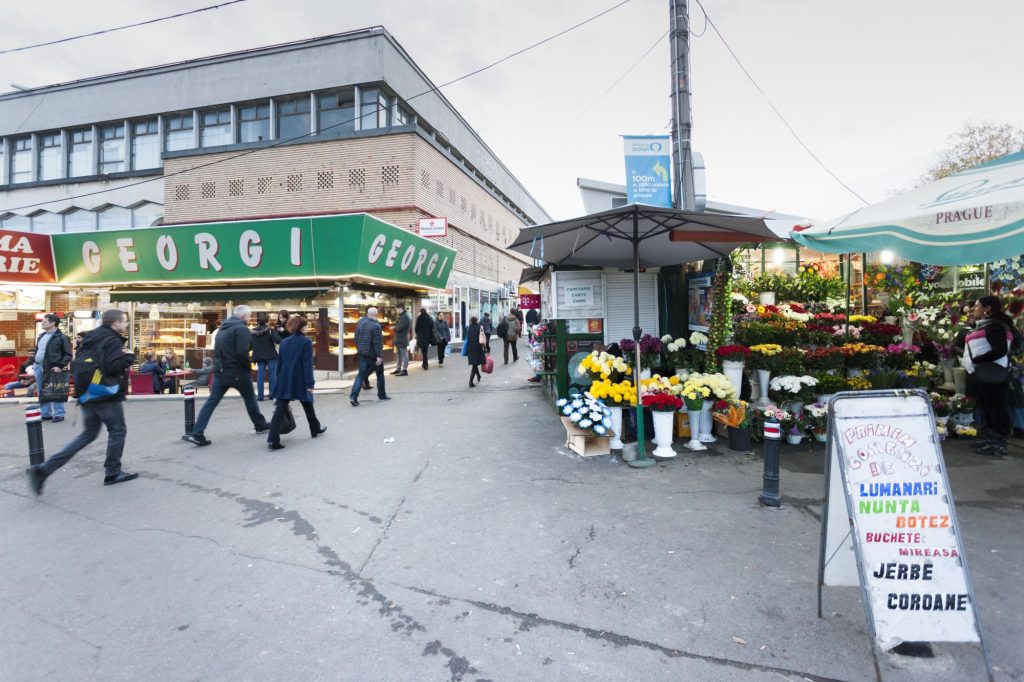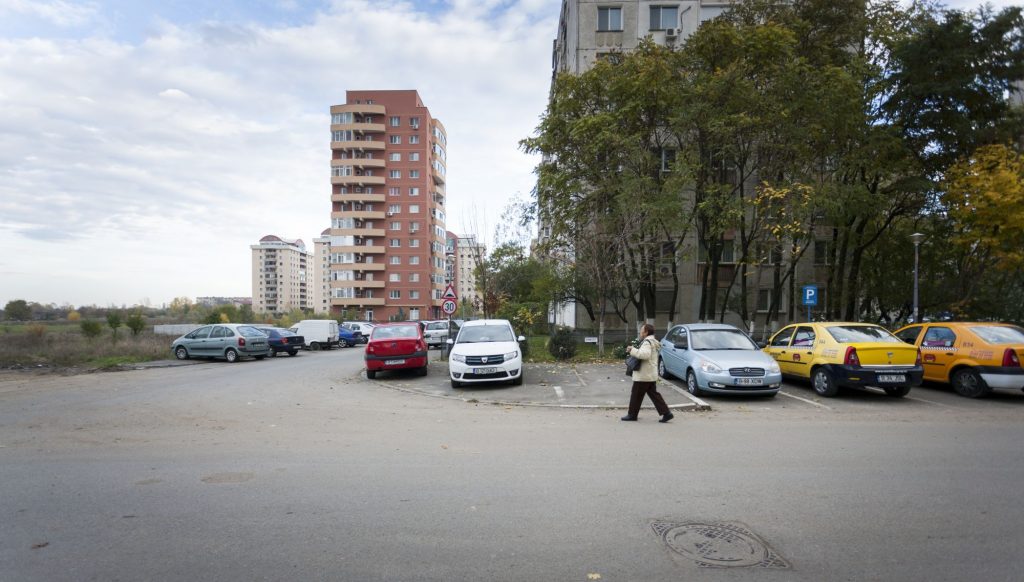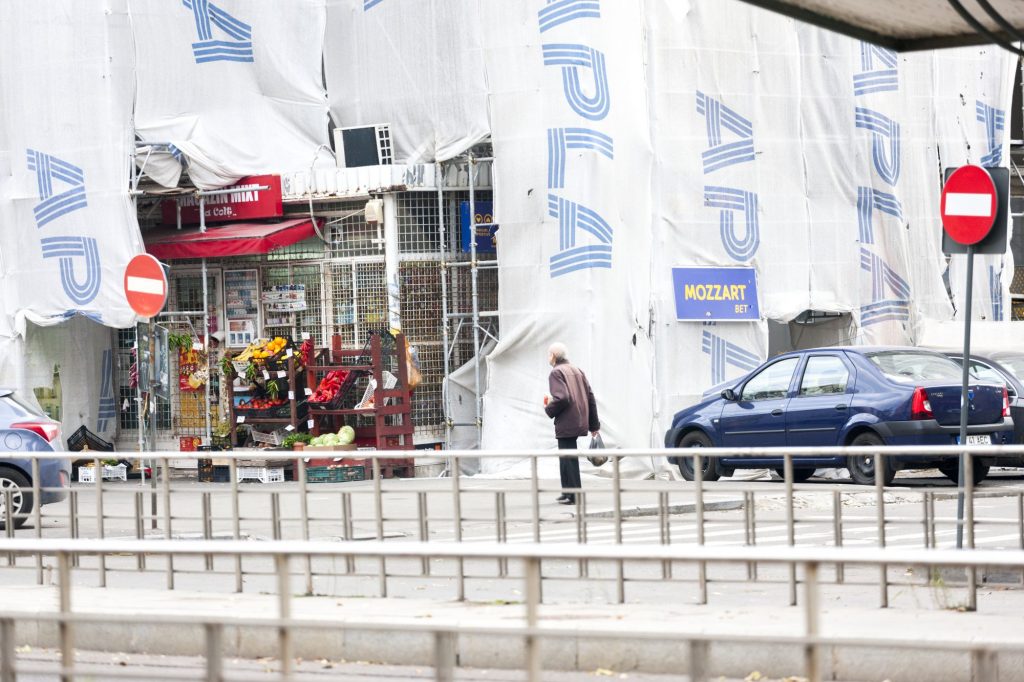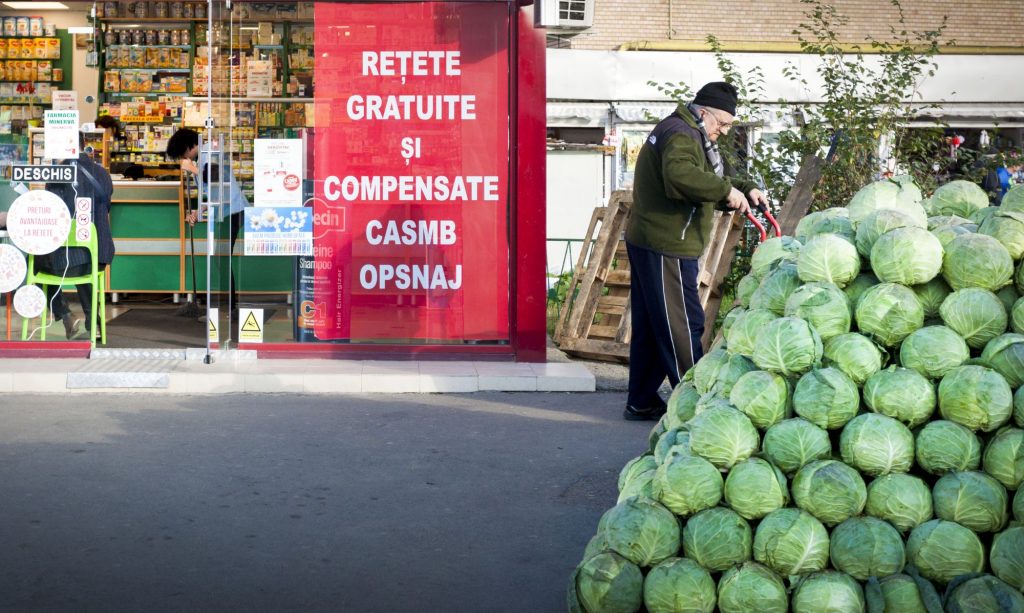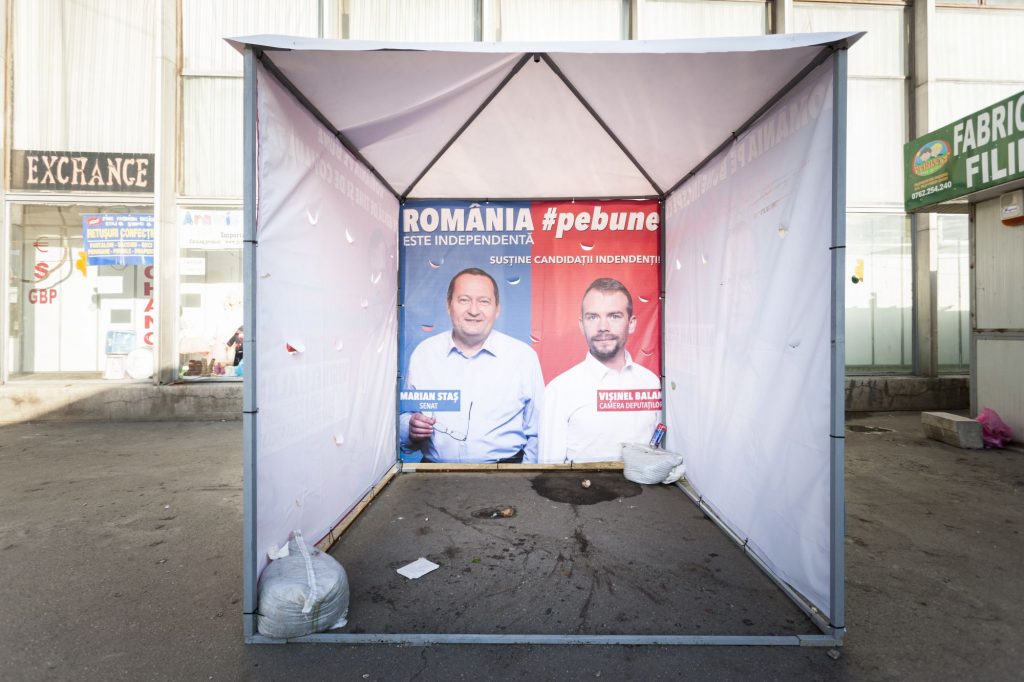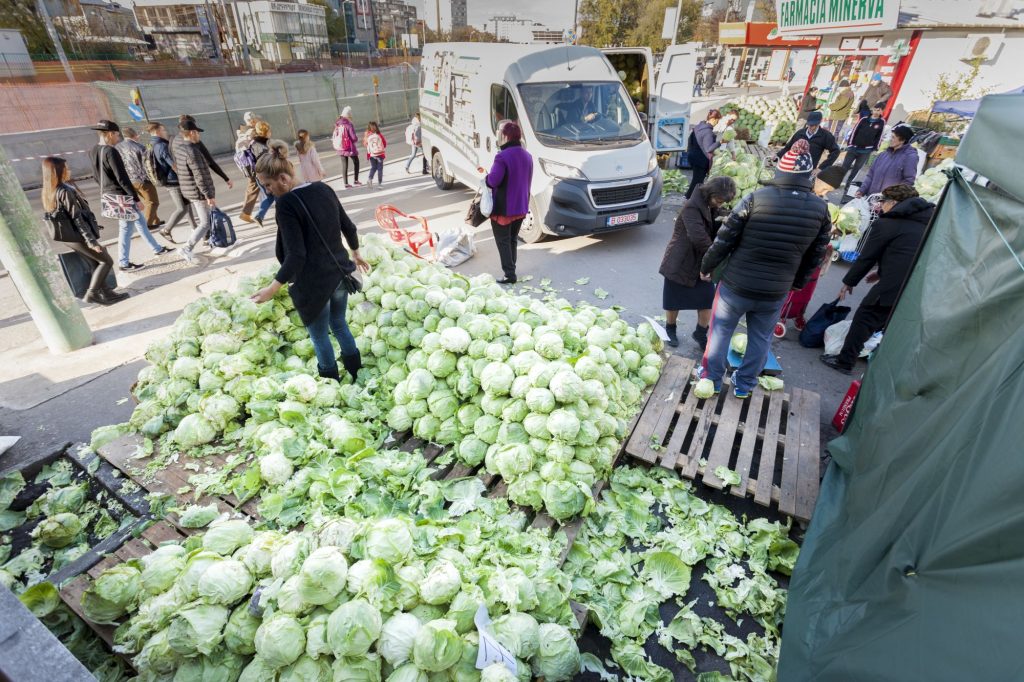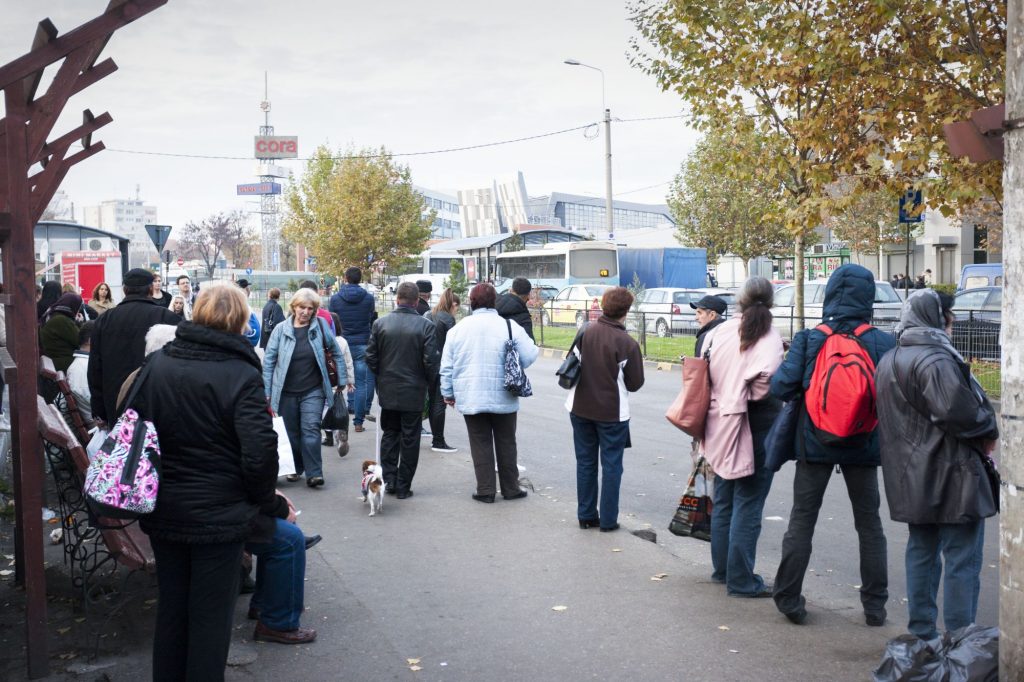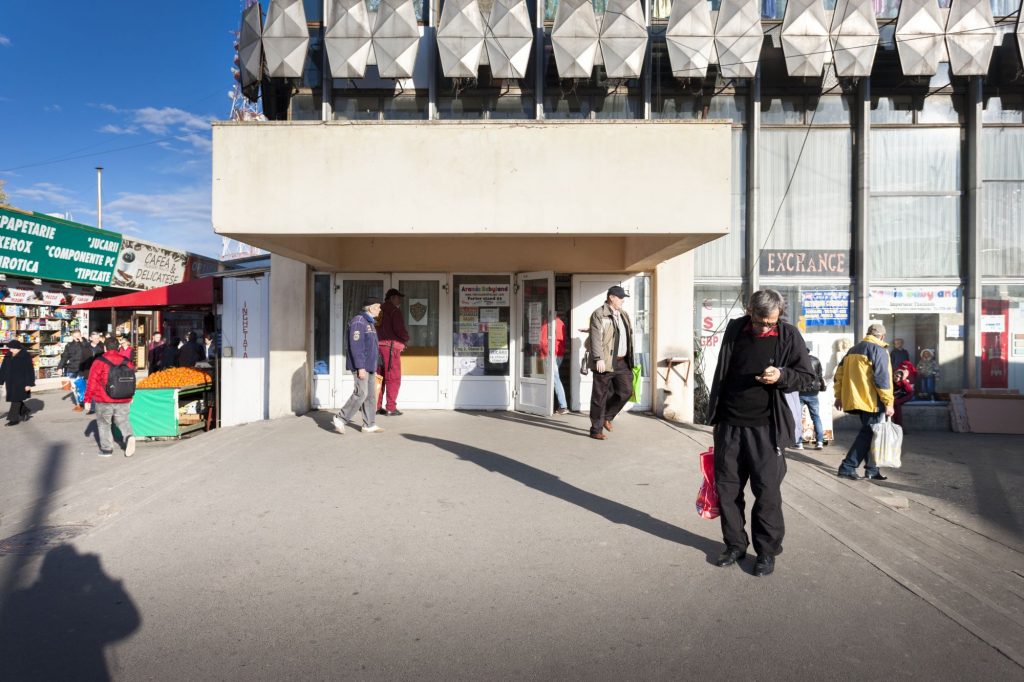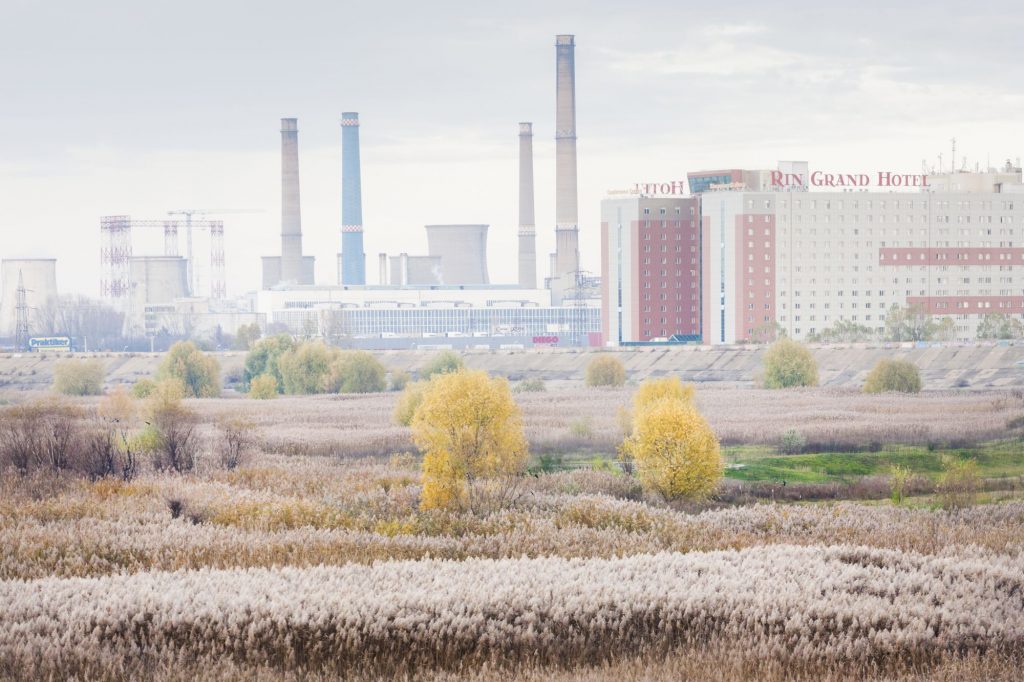Text: Mihai Duțescu
Photo: Andrei Mărgulescu
As I know two absolutely OK and smart people who worked for some years at the Al. Obregia Clinical Psychiatric Hospital – the renowned “loony bin” in Berceni – two doctors, a psychiatrist and a neurologist, and as both have agreed to talk to me, I have done this double interview with them. It is primarily about the hospital, which is one of the landmarks of Berceni, but also about life in the neighborhood in general, about how all these things are seen from a rushing subway train, between two shifts.
Ionelia Cristea (I.C. – photo left © Radu Nicolae) is a neurologist and she has worked at the National Institute of Neurology and Neurovascular Diseases at the Al. Obregia Clinical Psychiatric Hospital. She is around 30 and, among other things, she writes poetry. She won the debut competition organized by Cartea Românească Publishing, after which, in 2015, she published “Noaptea de gardă” (“Night shift”), a volume for which she has already received the most important literary prizes in the country.
Cristina Ilie (C.I. – foto right © Iulia Dana Baceanu) is also around 30, she is a psychiatrist and, apart from this, like Ionelia, she also likes to let herself be contaminated by various experiences which have to do with literature, in all its forms. After she completed her residency, she said “au revoir!” to Berceni and went to work in a hospital in Paris.
M.D: I think you know enough about the neighborhood, since you’ve worked here for some years. Tell me, what is this neighborhood like?
I.C.: It seems quite picturesque to me. It has a Balkan atmosphere, being sprinkled with peddlers, florists, a motley crowd sharing the instability, the continuous bustle. The actual way from the subway exit to the hospital – the route I know best – is dull, you can see the Annunciation Cemetery somewhere on the right, gas stations, supermarkets, private medical clinics on both sides of the road, with apartment buildings and branches of various banks interspersed between them – and, at some point, the hospital, delimited from the exterior by a long cement wall, isolating the wards of the mentally alienated from the rest of the city. As a peculiarity, referring to the area surrounding the hospital, I could mention the psychiatric patients, most of whom are socially disinserted, who stay glued to the bars of the fence on the inside, asking for money or food. I have not explored the small streets or the more isolated spots of the neighborhood too much, but mostly the main arteries which lead to the more important state hospitals, where I worked as well for a longer while forced by circumstances, both during college and during my residency.
Berceni gave me the sensation of an isolated place, which borrows something from the alienation of the inpatients of the psychiatric hospital, the sensation of a place which should not have been disturbed by the great process of industrialization. The way in which all institutions built there were designed and the local infrastructure is valid only if we regard Berceni as a peripheral area of Bucharest – as it was originally designed – an area where institutions such as the morgue, the crematorium, the hospital for psychiatric patients, the prison, the monastery, the cemetery are usually placed, locations which are isolated by definition and which are not made compatible with the hectic life of a city, with the factories or the workers’ apartment buildings. This probably leads to the interference and relentless searches of urbanistic solutions in the south, which only emphasize a lack, caused by overpopulation and the necessity of free space, indispensable to any urban settlement. Berceni did not make a great impression on me at first, but, like most places in this world, in which emotional memory plays a more important role than factual one, the area has become dear to me, because I’ve gotten used to it. And because I’ve gotten used to it, those things that I disliked at first have become familiar, consequently, I feel nostalgic each time I get there.
C.I.: I even lived in Berceni about 4-5 years, in 3 different apartments; both in Western Berceni and in Eastern Berceni, my favorite little joke about the neighborhood. And I even lived in the enclave in Huedin Complex, where almost no one ever visited me, as it seemed to them at the end of the world, even though public transport links were much better than, say, to Pantelimon. Let me explain what the allotment of the neighborhood is like, the boundary being right at the Obregia Hospital and the cemetery, which form a massive block that you have no way of going through, you are forced to walk several kilometers around it in order to get from one side of the neighborhood to the other, like a sort of Palace of the Parliament. So, what I call Eastern Berceni is the side closer to Oltenița, it’s cheaper, more bohemian, most shops don’t have air conditioning, there’s flawless Internet from the boys in the hood, wild playgrounds, gardens without ceramic gnomes, patients wearing colorful slippers and bathrobes in Mega. Western Berceni, on the other hand, the one closer to Brâncoveanu, is the bourgeois side of the neighborhood, it’s greener, with retirees and cool kids together at the ping-pong tables behind the apartment building, with more chic shops, with radio and Camembert, playgrounds covered with colored foam, is something else. Otherwise, if you don’t live in the neighborhood, the way from the subway exit to the hospital is one of the bleakest sides, with a fairly steep exit into the bustle of the square, a paltry sidewalk, without a bit of shade in the summer, and full of dogs.
M.D: With few exceptions, it seems the discrepancy between the north and the south is always geographically valid. For Bucharest, have you noticed certain specific differences between neighborhoods in the north and those in the south? You work a lot as a doctor, you’ve probably worked just as much as a medical student – do you still get to feel these things, or do you walk past them half-sleeping? Excuse me for making assumptions…
I.C.: Indeed, as a medical student you do internships in almost all large hospitals in Bucharest and thus, you have the possibility of getting to know the city better. Certainly, you can feel the difference between the northern and southern neighborhoods. In the northern part there are more modern office buildings, interspersed with classical architecture villas, and the residential solutions seem a lot more expensive than in the rest of the city. The northern neighborhoods give you the feeling of intimacy, of security, there is more vegetation, the spaces between buildings are more airy, and I think people who live here have above average incomes. However, in this area, access to public transport is much more limited compared to the access from the southern area, where the landscape is more grayish, working-class neighborhoods predominate and there are all categories of people. Personally, I feel more at ease in southern areas, due to the more lively atmosphere, despite the obvious discrepancies with the above-mentioned northern neighborhoods.
C.I.: Yes, clearly, the discrepancy is there, the south is poorer. But Berceni is still an interesting neighborhood, with a rhythm of its own, which appeals to me. Tiredness and especially lack of sleep sharpen rather than dull your senses. Or at least in my case it is substantially so. And when you start work much earlier or finish much later, you escape the bewilderment of rush hour and you have time for yourself, for the environment, you hold onto all sorts of details.
M.D: “Obregia” is a sort of city within a city, it is spread over a huge area and it has several buildings, small parks, alleys, streets, parking lots. How much time did you spend here daily, as a doctor? Do you have a way of intermingling with other people, outside of strict job relationships? If you get hungry, do you have where to eat?
I.C.: When I worked exclusively at the National Institute of Neurology and Neurovascular Diseases, I used to spend a very long time, the standard 7-hour schedule 5 days a week, plus the 14-hour shifts on weekdays or on weekends – though this was in theory, because I actually stayed there for more hours. You only intermingle with doctors, nurses and auxiliary health professionals, patients and patients’ relatives. And these are sometimes challenging interactions. There aren’t really places to eat. There are a few shops inside, a canteen, and there’s the hospital food which you receive while on a shift. But, as a doctor, you are not allowed to leave the hospital premises while on the job (that is why, if you want something special, you order it or bring it from home) and, even if you could leave the hospital premises, it’s a real adventure to get around Obregia “city” after a certain hour.
C.I.: Yes, Obregia is large. How much time does a doctor spend in Obregia? This depends a lot on one’s position, on the internal organization of each service, on the period, but it can easily add up to 30 hours, when one is also on a shift. Or it could, I don’t know what it’s like nowadays. It depends on how you define strict job relationships. Because you have colleagues with whom you need to exchange urgent information on patients, colleagues whom you meet and whom, perhaps, you chat to about congresses or what not, patients you take care of directly or not, families, shop assistants. But, on average, you interact with a few dozen people daily, once you get past the hospital gate. You invariably get hungry, as you spend at least 7 hours at work. The supply was hardly spectacular while I worked there. Luckily, there were good pretzels. The rest was middling at best. We indulged in ordering pizza sometimes, but that was mostly during shifts. And, like in all hospitals in Bucharest, there is no lunch break culture. Nobody prohibited you from eating, but everyone managed as they could, a quick sandwich on a bench or on the way between wards.
M.D: Tell me something nasty about your personal experience at “Obregia”. Something momentary, perhaps – a short story.
I.C.: I was on a shift in the 4th year of my residency and at the Institute they brought in for neurological checkup a schizophrenic inpatient from the psychiatric ward, in a catatonic state (the catatonic state is a sort of exteme apathy, in which the patient is unresponsive to external stimuli). He’d been like that for a few days, he’d been in that state before during the course of the disease, and he’d come out of it on drugs. They had brought him in now to exclude a possible associated neurological disorder, though he was a young patient. Consulting such a patient poses no risk while he is prostrate, but during the examination the patient went from his apathetic state to irritation. He suddenly became agitated and verbally and physically aggressive. He started to throw objects around and threaten the health professionals. He was restrained after a few minutes, in which he devastated the ER, attacked the health professionals in the room and tried to commit suicide. He missed me, fortunately. It seemed to me the longest checkup in my life.
C.I.: There used to be some very aggressive dogs, especially next to one of the children’s wards. I was terrorized by them. While on shifts at the adults’ wards I was lucky, as the security agents were with us at the emergency room and, if I had to get around, I asked them to come with me, it was OK. But when I was on pedo-psychiatry shifts, this was my main nightmare, to go from one ward to another.
M.D: I suppose that, beyond the rush that we spoke of earlier (I keep returning to this, as you can see), there was or still is something, somewhere, related to Berceni directly or indirectly, a place, a sensation, a memory which roams around you and still stirs some emotions. So?…
I.C.: Yes. A memory from my 6th year of college, from the first day of my Forensic Medicine internship. To get to the Mina Minovici Institute, you have to go from the National Institute of Neurology (located on the same grounds as the Al. Obregia Hospital) – from the area of Berceni Road – to the Apărătorii Patriei (Defenders of the Motherland) subway stop, then on Sergent Ion Iriceanu Street, to the Vitan-Bârzești Road entrance, and from there, through a squalid and insalubrious landscape, you arrive at Forensic Medicine. It was summer when I was doing this internship and I had never seen the building or the area before. The assistant conducted the seminar and then took us to the lab where autopsies were performed, where, on both sides of the room, there were fresh corpses (very different from the formalinized ones we had become used to in the first years). In that second I knew that I wouldn’t be a forensic doctor, that a live person, though ill, is still preferable to one who doesn’t say anything. And, to continue in this macabre manner, Berceni (or, rather, the periphery of this neighborhood) reminds me of the repulsive emotion of discovering and becoming aware of the human condition.
C.I.: Berceni is one of the neighborhoods which I have become most fond of. What I remember the most clearly: grocery shopping outside peak hours, when everyone gets involved in the conversation and there’s this kind of verbal pool which resonates throughout the marketplace, and the Sun Plaza terrace in early summer, when it’s almost empty, with sand, deckchairs and electro music.
M.D: What is very, very ugly about Berceni and what is very beautiful?
I.C.: The grim peripheral area is very unpleasant, as I was saying. Moreover, the homeless – former patients of the Institute of Psychiatry, the insecurity I experience myself after dark. Conversely, I like the extraordinary potential from the point of view of the hospital network, a potential that has already entered the collective consciousness, the lack of emphasis, the strange simplicity of the place.
C.I.: Very ugly, the ugliest – the intersection in Piața Sudului (South’s Square). An eyesore. And the sidewalk I was talking about, from the subway exit to the hospital. Very beautiful? Hmm, this is something more relative. Western Berceni is nice enough for a neighborhood of apartment buildings only. And there’s an area of houses toward Brâncoveanu, where it’s very beautiful in spring. And the atmosphere, the rhythm, with nice shop assistants, with smiles and chit-chat.
M.D: If you were in the mayor’s shoes for a few days, what steps would you take for Sector 4, which Berceni neighborhood belongs in?
I.C.: I don’t know, probably solving the problem of the stray dogs, which is, again, a major disadvantage of the area. Or developing the social welfare services in the sector, creating state-budgeted retirement homes for the elderly who are alone and disabled or for those abandoned, institutions which should also be coordinated by means of social welfare services, securing the main pedestrian streets and installing video systems in parks, hospitals, schools.
C.I.: Haha. Well, I’d also need a little magic wand, if it’s only for a week. First and foremost, I would look for a space large enough for cultural activities. Something that would belong to the neighborhood, with a free admission for everyone, with rooms where one could practice sports, various workshops, art, screenings, depending on the residents’ proposals. Secondly, a footbridge, a little path, something that will allow for an easier connection between the East and the West. And, if I had any time and funding left, I would launch a tender for the reinvention of the intersection in Piața Sudului.
This text is part of Southern Stories – my personal contribution to ”Actopolis.Bucharest-South” project consists of a set of narratives about several key-points in the area. Each of these stories documents one neighbourhood, and particularly one specific aspect of that neighbourhood. The stories are about places but always also about people using, inhabiting and transforming these spaces. I live in this part of the city. I both like it and hate it, and as an architect and writer I believe I can understand and (sometimes) anticipate its transformations.
Andrei Mărgulescu’s precise and empathic photos are meant to accompany the text but they compose a distinct visual discourse on the places and people that inhabit and use them.
Related articles:
Stories from Bucharest South. #1 Rahova / Antiaeriană
Stories from Bucharest-South #2 Vitan

